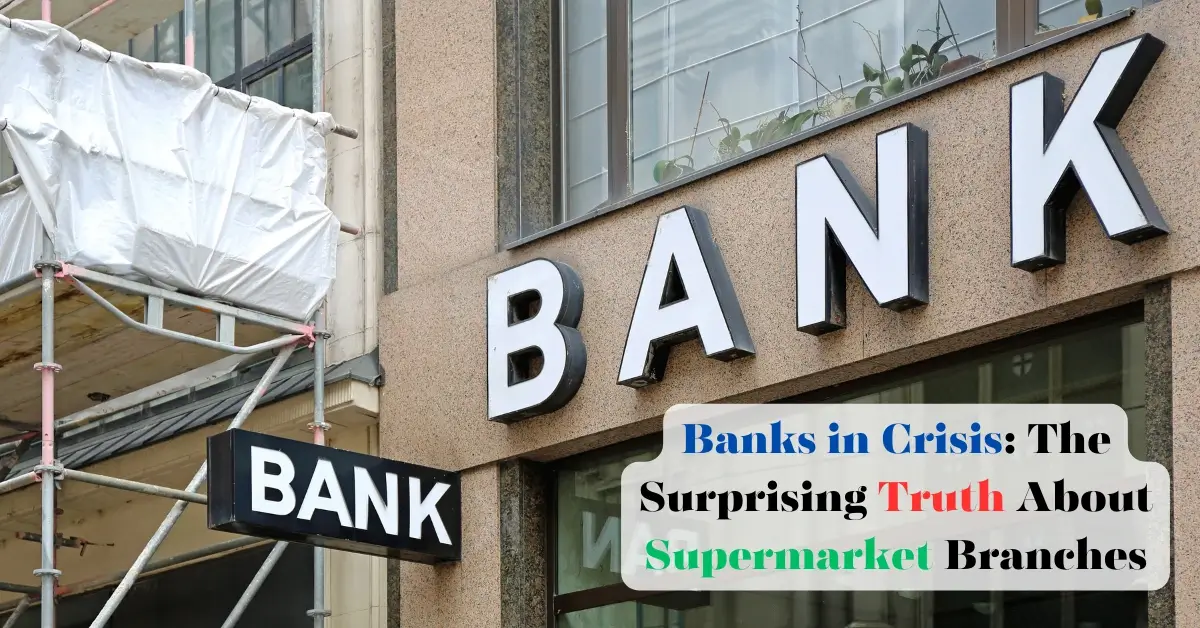
The Decline of Supermarket Bank Branches: A Shift in Banking Trends
In recent years, a significant transformation has been unfolding within the American banking industry. The closure of bank branches, particularly those located within supermarkets, has become a noticeable trend. This seismic shift in banking operations is driven by a multitude of factors, with the most prominent being the rapid adoption of mobile and online banking following the onset of the Covid-19 pandemic in 2020. In this article, we delve into the reasons behind the alarming rate at which supermarket bank branches are shutting down and explore the implications of this trend for both customers and financial institutions.
Accelerated Branch Closures: A Snapshot
To comprehend the extent of this phenomenon, one statistic stands out – a staggering 10.7% of in-store branches were closed by banks in the year ending June 30, according to data from the Federal Deposit Insurance Corporation (FDIC). This figure is in stark contrast to the 1.4% closure rate for other branch types during the same period.
The pace of branch closures within the supermarket environment has accelerated, leaving many industry experts astounded. Notably, regional banks such as PNC, Citizens Financial, and U.S. Bank have been at the forefront of this trend, shutting down in-store locations in chains like Safeway and Stop & Shop.
The Pandemic’s Role in the Transformation
The banking industry’s decision to close a significant number of its in-store branches was catalyzed by the Covid-19 pandemic. With the pandemic acting as a catalyst, banks closed nearly 18% of their in-store branches in 2021. This closure rate is in stark contrast to the 3.1% closure rate experienced by other types of branches during the same period, as reported by S&P Global.
Why Are Supermarket Bank Branches Closing Faster?
Several key reasons explain this swift transition:
1. Digital Transformation
The most significant driver of this trend is the rapid adoption of mobile and online banking. As customers increasingly turn to digital channels for their banking needs, in-store branches have lost their appeal. In a post-pandemic world, banks are looking to reduce less-profitable branches and are now focusing on the establishment of full-size branches to offer comprehensive services, including wealth management accounts, credit cards, and loans.
2. Changing Customer Preferences
The decline in customer foot traffic within supermarket bank branches is another contributing factor. With more customers opting for the convenience and flexibility of online banking, these smaller in-store locations are witnessing reduced demand, leading banks to question their cost-effectiveness.
3. Profitability Concerns
Banks have transitioned from viewing in-store branches as a means to simply dispense cash to a place where they can attract customers with a broader array of financial services. This shift in focus has prompted the closure of smaller branches that do not generate sufficient customer traffic or revenue.
The Outlook
While the pace of closures has somewhat subsided since the peak in 2021, it remains significantly higher than the pre-pandemic levels. For instance, in 2019, banks closed just 4.2% of in-store locations and 1.7% of other branches, illustrating the ongoing transformation within the industry.
This transition is also driven by the changing financial landscape, with customers opting for higher-yielding options like money market funds, leading to declines in deposits in in-store branches. In the year ending June 30, the FDIC reported a 15% decrease in deposits from in-store branches, compared to a 4.7% decrease in deposits at other branches.
Conclusion
In summary, the closure of supermarket bank branches at a rate seven times faster than other locations is a clear reflection of the profound changes within the American banking industry. The pandemic-induced surge in online and mobile banking, shifting customer preferences, and the industry’s focus on profitability have all contributed to this transformation. The outlook suggests that while the pace of closures has slowed, the trend is here to stay. The industry continues to adapt to a new banking landscape, where in-store branches are becoming less common, and the focus is on delivering a wider range of financial services to meet the evolving needs of customers.





